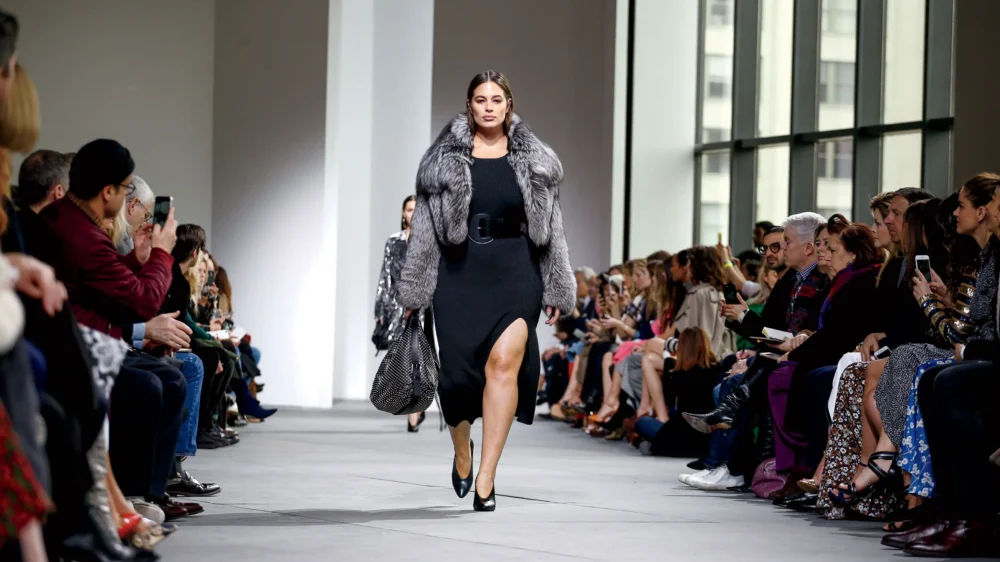The fashion world is ever-changing; trends come and go and come again, and there always seems to be a new fad circulating social media every few months. However, what remains a long-standing challenge for the industry at large is size inclusivity. Accommodating various body types in fashion has oft been a polarizing topic, especially in the world of couture and high-street. Some argue that exclusivity makes fashion alluring; symbolizing luxury and an aspirational quality that takes effort to attain. On the other hand, advocates are fighting for better representation of various body types in fashion, as rampant lack of diversity in the industry has notoriously made it harder for diverse body types to access high quality, fashionable clothing; further perpetuating harmful standards of beauty. Regardless, there is still some promising progress being made in size diversity in fashion. Here’s how body inclusivity is shifting the tides in the fashion world:
View this post on Instagram
The Struggle For Inclusivity
The fashion industry has historically been notorious for its exclusivity, whether on the runways or in the pages of our most hallowed publications. Take a look at any runway show or advertisement and the standard is clear; in the industry models certainly tend toward the slimmer side; sample sizes beget a certain body type that typically graces runways, with very few plus-size models in the mix. In the age of social media activism and the body positivity movement, many believe that representation issues are largely a thing of the past now that there is a substantially higher demand for size inclusivity. However, there are still hurdles to overcome in 2023.
@redkarolineBased on questions for my video “from skinny to plus size” with 3M views, link in comments ➡️♬ Monkeys Spinning Monkeys – Kevin MacLeod & Kevin The Monkey
In this year’s February New York Fashion Week, there was a 24% drop in plus-size models walking the runway compared to previous seasons. Casting and fitting issues further add to the problem of body representation in fashion, as the talent pool is small. There have also been controversies wherein models who are not plus-size are asked by designers to wear body padding to create the illusion of a plus-size body and fill out larger garments. When diverse bodies are represented in fashion, clothing is often ill-fitting or proportionally out of tune with what consumers want and need for that matter.
Has There Been Progress?
View this post on Instagram
Despite the struggle for body diversity in fashion, all hope is not lost. As of late, there have been more brands striving to represent all types of bodies in their shows and size offerings without compromising their signature styles. Selkie has been gaining much traction for its size-inclusive fashion, as seen in their Fall ’23 presentation. The fairy-like, ultra-femme looks adorned with bows, tulles, and ruffles are seen on a wide range of body types. Designer Christian Siriano has also been praised for including plus-size, queer, and POC models in his shows year after year.
View this post on Instagram
Canada’s fashion scene is also no stranger to breaking barriers. Fashion Art Toronto’s Toronto Fashion Week saw plus-size models and models with disabilities hit the runway, allowing spectators to see a glimpse of themselves represented in the fashion world. Mainstream fashion brands have also been revamping their size ranges and incorporating more plus size models. Though there’s much to be done, the tides have shifted towards a more inclusive fashion world.
View this post on Instagram
What Does The Future Hold?
True inclusivity may seem out of reach for the fashion world currently, but the progress the industry is making is not to be disregarded. The rise in models of various body types presents a definitive potential for change, however the dearth of talent compared to models of smaller sizes is a symptom of a larger issue. Biases against larger bodies
go much deeper than merely fashion; they are endemic to a socio-cultural perspective on how health, weight, and eurocentric beauty standard.
The problem has become much more glaring with the advent of social media and the body positivity movements that are calling for a change in how weight and health are perceived. Even weight loss programs and workshops have radically changed their messaging in line with this shift. You can search for “weight loss workshops near me” and find coaching and community that centers the discussion on creating sustainable healthy habits rather than solely weight loss strategies. Rather than a person’s size indicating their health status, it’s acknowledged that various factors contribute to weight and that a person’s worth should not be based on that.
Body positivity in a fatphobic world is often difficult to navigate, and the fashion industry’s limited representation doesn’t help with dismantling negative perceptions of weight, health, and diversity. However, the discourse and demand for body inclusivity is far from over, especially as these issues continue to be exposed. With more fashion brands showing that inclusivity can be achieved with style and flair, perhaps more will follow suit.

